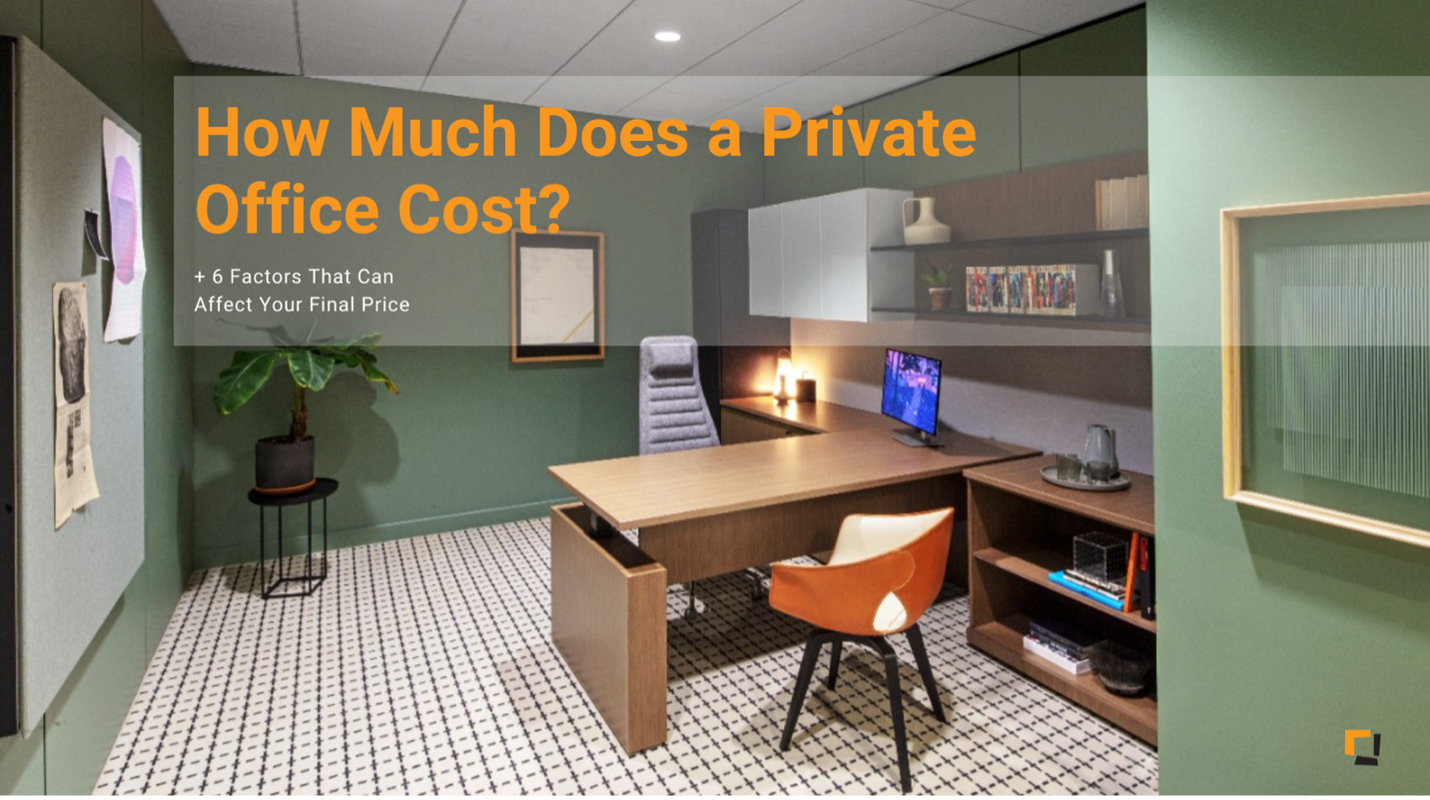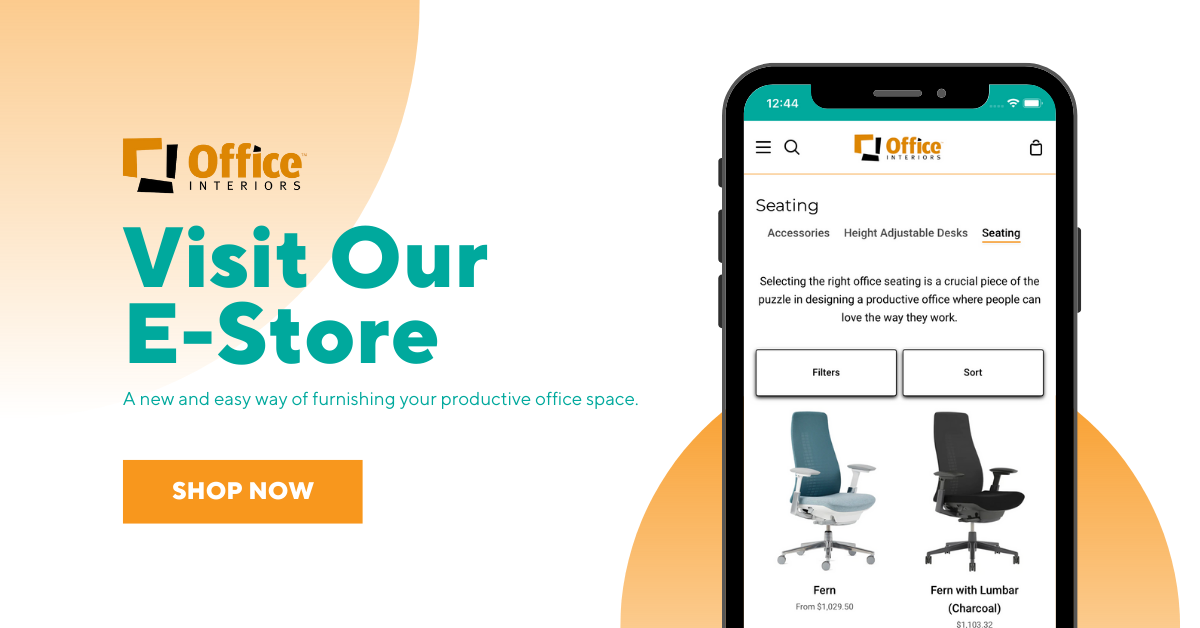
Planning your new private office is a very important decision. Not to mention, it is also a significant investment. Many business owners go into the process with no idea how much a private office costs (or how these are calculated), which can be incredibly overwhelming.
You deserve to be armed with this information as you plan your private office. After all, your private office isn’t just another room. It’s a workspace that can help you promote your team members’ productivity, increase workspace well-being, or maximize the use of your square footage.
At Office Interiors, we understand the importance of private offices for your workspace so you can concentrate, innovate, and recharge without the distraction associated with open office plans.
This article will walk you through the many factors determining a private office’s cost. By the end of this read, you’ll be prepared to make the best decision for your business and avoid any confusion that can come with worrying about the cost.
The Cost of a Private Office – 6 Factors to Consider
There are a variety of factors that influence the final cost of a private office. Below, we’ll dive deeper into the factors that impact the price of a private office.
1. Desks
You likely spend most of your time at your desk. This is why you need a worksurface with enough room for your monitors, monitor arms, and any additional work tools you use. Of course, the size layout of the desking system you choose will influence the final cost of your private office.
These days we find that the typical desk calls for a layout of approximately 6’x6′ in an L-shape configuration – one primary work surface with a return surface perpendicular to the primary work surface. You should typically count on spending between $900-$7000 for a 6’x6′ desk. On the contrary, straight desks are generally less expensive than L-shaped desks.
While the range is rather broad, your final price will ultimately be determined based on the amount of storage and type of finish (which we will cover in the following sections).
Height-adjustable desks (or sit-stand desks) are inexpensive compared to traditional desks. After all, you have to buy the work surface anyway. However, it is slightly higher as you’re paying for motor-driven legs, not traditional legs. A Basic Up Down Sit Stand Desk starts at $750 and ranges up to $3000 depending on the features, shape, engineering, and supplier.

For this price increase, height-adjustable desks are a worthwhile investment. It is clear that actively using a height-adjustable desk or table to keep your body moving throughout the workday is good for you. We encourage our customers to add height-adjustable functionality to their teams’ workstations.
Lastly, it’s important to consider who is getting a height-adjustable desk. If you’re buying for your entire office, you’ll want to choose a desk that fits everyone. Two-stage desks are cheaper, but they have limited height ranges. Three-stage desks have higher height limits, but they’re slightly more expensive.
2. Seating
Office seating may seem minor, but it can also determine your overall cost. Ultimately, this depends on what type of seating you need and all the ergonomic features, fabrics, and finishes you choose.
The cost of task chairs ranges from $450 to $1000, depending on each chair’s build quality, adjustments, and customization options. To learn more about the best task chairs of 2022, check out this comprehensive list of the best ergonomic office chairs we’ve created after summarizing the comments from hundreds of user reviews and combining them with the manufacturers’ own publicly available specs.
Regarding guest seating, the cost depends on who visits you. If you regularly meet with customers, choose guest chairs with minimal adjustments. If you collaborate with colleagues, you may select mobile seating that can be easily moved if someone needs to see your monitor. You should budget between $100 and $1000 for a new guest chair after considering features including quality, warranty, design and finish selection.
3. Storage
Office storage helps you stay organized, save space, and be productive. The cost of a private office can quickly increase as you add more storage. Therefore, it’s essential to know exactly what you’re storing as you consider the different types of office storage.
Traditionally, companies have opted for paper storage like overhead bins, lateral files, and pedestals. Some employees may still want this type of storage, but options like wardrobes have become increasingly popular as people need more storage for items like laptop cases, coats, and running shoes.

For commercial quality storage solutions, price ranges vary depending on manufacturer, quality, size, etc. For example, mobile pedestals can cost between $460 – $750, while wardrobes can cost between $750 – $1500.
As for low-end import options, you can expect to pay anywhere between $100 – $400.
Finally, high-end storage solutions pricing is much higher than low-end or commercial-grade storage. You can expect to pay thousands of dollars for these more luxury options.
4. Finishes
Do you want a more traditional feel, or do you want something more modern? Your answer to this question will determine the finishes you get to choose from, which will increase or decrease the overall cost of your private office.
High-end finishes like glass and quartz are the most expensive options, while wood is slightly less expensive. All three finishes are beautiful, but they could be more durable. For this reason, high-pressure laminate (HPL) and low-pressure laminate (LPL) are private offices’ most popular finish options.
HPL is highly durable but less attractive than glass, quartz, or wood. LPL is the least expensive finish option. However, it is less durable than HPL. Each type of finish is subdivided into multiple price ranges or grades. Some manufacturers offer more colour options within each finish grade than others.

The more durable your finishes are, the more expensive your furniture will be. But you’ll have more customization options to customize your furniture to the space. Plus, your furniture will last longer than any furniture made with lower-quality materials.
While we do not have a specific price point to reveal when it comes to finishing selections, we recommend checking out some of our supplier’s online resources, where you can get an idea of what is currently available on the market and their pricing.
Haworth’s entire surface materials library is available for you to browse online. Not only that, but they also provide warranty information and cleaning information just a few clicks away.
Humanscale has a dedicated portal that outlines textile designs unique to its products. You can also learn about their in-house designers and what inspires their designs.
SitOnIt Seating has an entire library of over 15,000 finishes available to browse. You can see what textiles, mesh and plastics are available and what products they work for.
Group Lacasse has both their upholstery and their finishing libraries available online. You can browse by colour, grade, manufacturer and more.
5. Technology
As mentioned above, you likely spend most of your time at your desk. That’s why it’s important to consider what technology you need to be engaged and productive at work. The cost of technology for your private office depends on monitor arms, wire management, and worksurface power.
The more monitors you use, the more money you’ll pay. There are monitor arms that hold up to ten monitors. However, ten monitor arms (and monitors) will weigh more, so you’ll have to choose a desk with a higher weight limit. Of course, this will be more expensive. Humanscale monitor arms can cost you anywhere between $350 – $1500, depending on the specifications you go for.

Not all height-adjustable desks are created equal when it comes to wire management. Cheaper, basic desks don’t even offer wire management. More expensive options, like Nex by Groupe Lacasse, have cable trays to keep wires out of the way as you raise and lower the desk.
Worksurface power will also determine your price. If you only want one or two outlets, it’ll be less expensive than USB-A power adapters or wireless charging. With these more expensive options, you can easily plug in your phone or laptop chargers without getting on your hands and knees to plug into a wall outlet.
6. Installation and Assembly
Installation and assembly will also impact the final cost of your private office. This cost depends on how it is assembled and who is assembling your private office. The more time (and labour) it takes to assemble your private office, the more expensive it’ll be.
For example, the price will go up if your installation team has to carry everything upstairs or go up the elevator. If your private offices are on the first floor, assembling won’t cost as much because your installation team will save time by not lugging the furniture upstairs.
Additionally, it will cost more if you have a dedicated installation team to assemble your private office furniture. If you assemble everything yourself, it’s going to be less expensive.
What’s Next?
The truth is, there are so many different factors that affect the cost of a private office. Overall, you should expect to pay between $5,000 to $15,000 per private office, depending on the final finishes, desking system, storage options, technology, and seating you choose.
The only way to know exactly how much your private office will cost is to schedule a consultation with an Office Interiors expert. Now that you understand how these costs are calculated, you’ll be better prepared to ask questions, and we are more than happy to guide you to make an informed decision as you plan your private office.
Ahona Saha
Marketing Assistant
Office Interiors
As Marketing Manager at Office Interiors, I focus on creating educational content that makes it easier for you to make confident, informed decisions about your workplace. Whether you're planning a new office, upgrading your furniture, or exploring new technology, my goal is to provide the insights and inspiration that help you create a space where your team can truly love the way they work.
Subscribe to Our Blog
Contact Us
If you’re ready to start improving productivity, streamlining processes, and love the way you work through optimized workspaces and office technology, contact us today. Our team of experts is here to help!
Topics:


